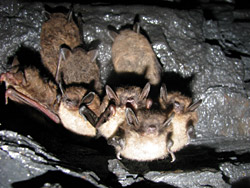 Bats in the barn? A new rule in New Hampshire says that they can’t be removed between May 15 and August 15, when bats are typically raising their young. If a bat has tested positive for rabies, then special permission to exclude the bats will be given.
Bats in the barn? A new rule in New Hampshire says that they can’t be removed between May 15 and August 15, when bats are typically raising their young. If a bat has tested positive for rabies, then special permission to exclude the bats will be given.
The rule only applies to unoccupied structures.
“This rule helps protect our remaining bat populations during the time when they are raising young,” said New Hampshire Fish and Game Department Nongame and Endangered Wildlife Program biologist Emily Brunkhurst in a department press release. “While this measure is certainly helpful, we strongly urge people to avoid evicting bats from any structure, occupied or otherwise, during the summer months. Our bats are in big trouble, and, this is something concrete you can do to help them survive.”
The problem, of course, is white nose syndrome, which has reduced the populations of five out of New Hampshire’s eight bat species. Little brown bat populations have declined 99 percent, the release says.
The press release also notes that white nose syndrome has been detected in Rockingham County, in the southeastern corner of the state, near Boston, Mass.
The press release includes many interesting details about white nose syndrome in NH, and is worth reading just for that. Read it here.
Photo: Long-eared bats have been hit hard by WNS in New Hampshire. Courtesy New Hampshire Fish and Game Department.

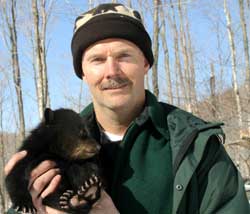 Mark Ellingwood, who, for the past 13 years, has served as the Wildlife Programs Administrator for the New Hampshire Fish and Game Department, has been named the department’s Wildlife Division Chief. He is been with NH Fish and Game for a total of 18 years and was also a regional wildlife supervisor.
Mark Ellingwood, who, for the past 13 years, has served as the Wildlife Programs Administrator for the New Hampshire Fish and Game Department, has been named the department’s Wildlife Division Chief. He is been with NH Fish and Game for a total of 18 years and was also a regional wildlife supervisor.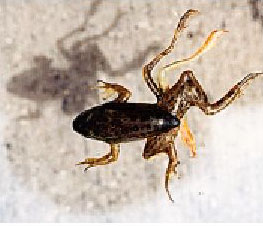 On an August day 17 years ago, eight Minnesota junior high school students on a field trip caught 22 frogs in a farm pond. At least half of the frogs had some abnormality, mostly in their hind legs. The conscientious teacher reported the group’s finding to the state. Dutiful state scientists surveyed wetlands across Minnesota and found at least one hotspot of frog abnormality in every county in the state.
On an August day 17 years ago, eight Minnesota junior high school students on a field trip caught 22 frogs in a farm pond. At least half of the frogs had some abnormality, mostly in their hind legs. The conscientious teacher reported the group’s finding to the state. Dutiful state scientists surveyed wetlands across Minnesota and found at least one hotspot of frog abnormality in every county in the state.
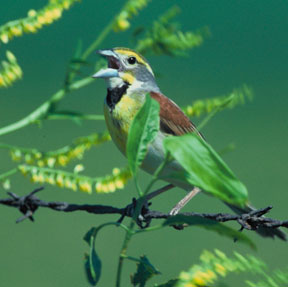 There are more dickcissels (Spiza americana) on grasslands restored with native grasses and they nest more frequently than on grasslands with exotic grasses, a study reported in the most recent issue of
There are more dickcissels (Spiza americana) on grasslands restored with native grasses and they nest more frequently than on grasslands with exotic grasses, a study reported in the most recent issue of 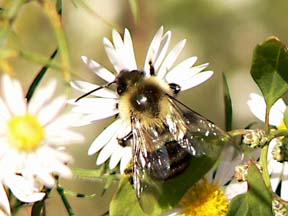 A mild winter means more bumblebees in Utah, a researcher says. Particularly, one rare species that previously only had 129 bees has been seen by the dozens in one Utah city alone. This news is hopeful because, generally, bumblebees have been in decline nationwide.
A mild winter means more bumblebees in Utah, a researcher says. Particularly, one rare species that previously only had 129 bees has been seen by the dozens in one Utah city alone. This news is hopeful because, generally, bumblebees have been in decline nationwide.
 Bats in the barn? A new rule in New Hampshire says that they can’t be removed between May 15 and August 15, when bats are typically raising their young. If a bat has tested positive for rabies, then special permission to exclude the bats will be given.
Bats in the barn? A new rule in New Hampshire says that they can’t be removed between May 15 and August 15, when bats are typically raising their young. If a bat has tested positive for rabies, then special permission to exclude the bats will be given.